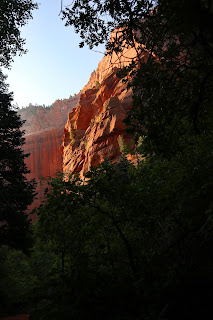.
A row of marble columns recedes in backward view, tall with
heavy Corinthian bases. Beautiful Ionic capitals,
on which nothing rests, glimmer in the morning sun. I consider their gigantic size, and marvel
that I could sculpt them with my father’s tools.
I placed these columns along the way to add grace to the road
and to link the various buildings to one another, an esplanade to the theater
on Saturday nights, and later to the third floor of Motel6.

Looking at them now, life seems a series of columns, marching along
like days.
I have never had enough
columns or enough days.

How many marble columns did I sculpt?
Five thousand? Ten thousand?
They are the unifying beauty—the reasons that
last.
I’ve made a forest of marble: Death Valley, Rocky Mountains,
Wind River Mountains, and now red-desert places of Utah. I have erected these silent marching men of
marble who bring grace to the roads they walk.
What difference does it really make whether he comes today or
six days from now? I am still lean as
when tramping Mt. Shasta, and stubborn as when selling the farm in Tennessee.
I found early the one man I was destined to love, and though
there were times of joy in his graceful company, I always returned to my lovely
columns.
He, pour soul, has known ten
wives, and has grown to hate them all, while I have drifted in a small boat, as
down a river, toward the sea of obliteration, always finding new pleasures in
scenery along mossy banks.
I knew his glory intimately, and since then have worked hard, imagining
myself an athlete of the Olympiad.
These recent columns summarize thousands left along pathways
less traveled. How they shine in their
variety, how perfect in their proportions.
I keep seeking out ideas for the most perfect pillar. If the others were shown, it would not improve
upon this group. Stand there my
shimmering columns bearing nothing upon your heads.
All along I have been more smiled upon than many and more fortunate
than most, with many columns to chisel out with those old tools of father.
 |
| Column of Air |
Please comment on the blog if you want your comment to be
public.
Otherwise you may comment by
email.
A note to cell phone users: In the past, some of you
complained that you were not allowed to comment on the blog when using a cell
phone. I offered solutions, and usually
my solutions failed.
I believe the problem is now understood: You can only comment using a cell phone if
you are logged in with a Google account.
You cannot even comment as “anonymous” unless you are so logged in. (Using a laptop computer, you do not need to
be logged in to leave comments.) This is
a major flaw in Blogspot.com, and I was unaware of it for years. Google (which includes Blogspot) seems
unwilling to fix it due to their ongoing war with Apple. If you find this explanation inaccurate,
please let me know.
























